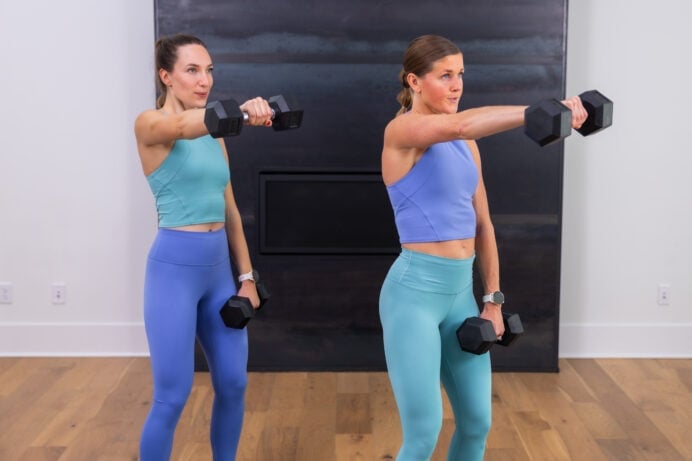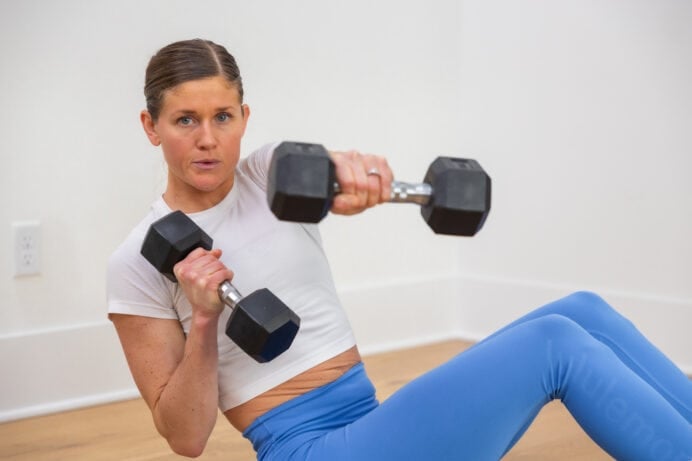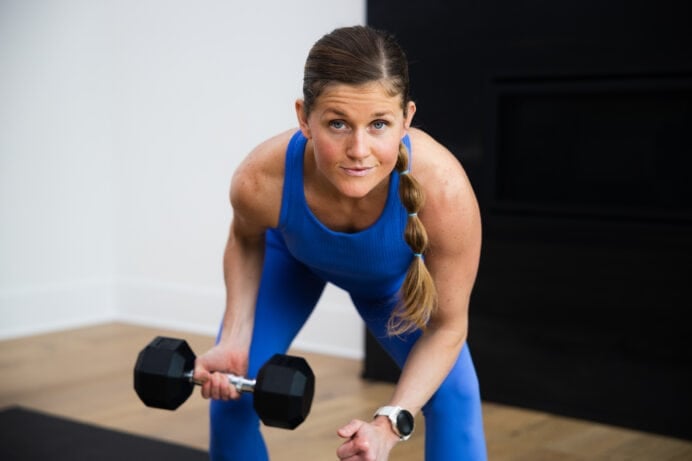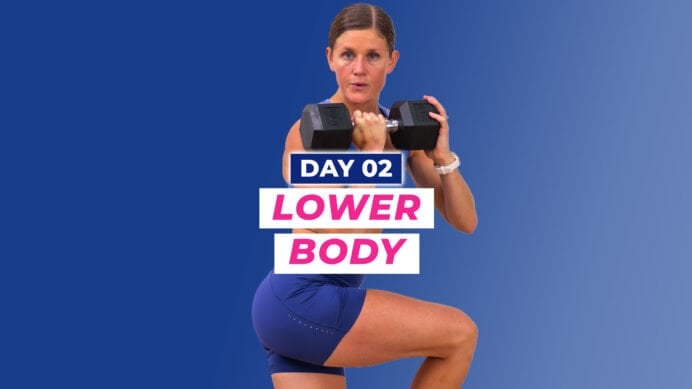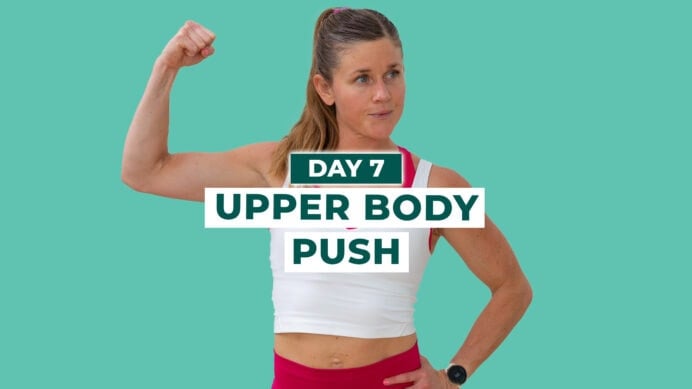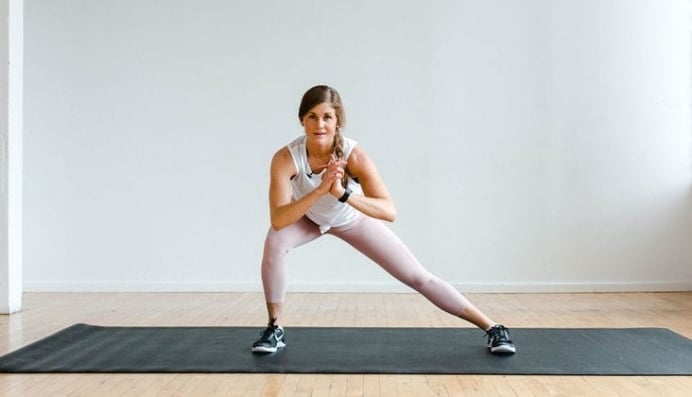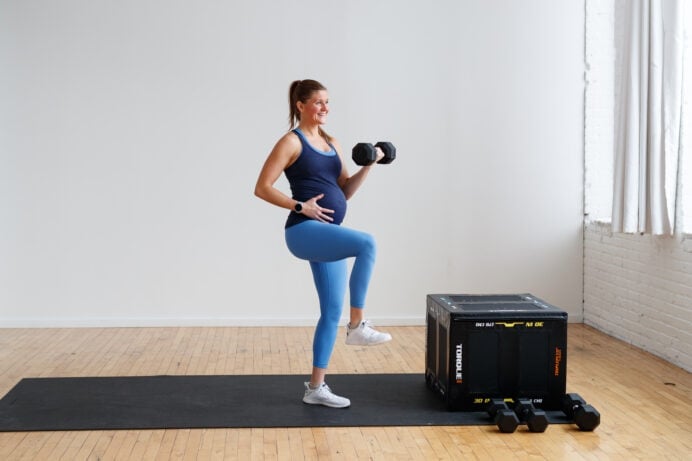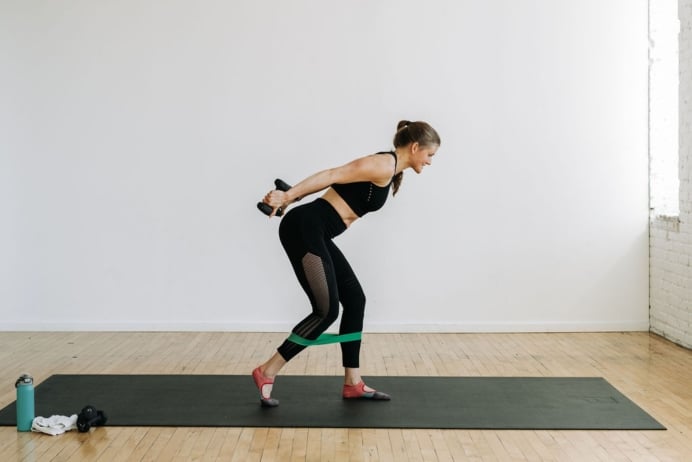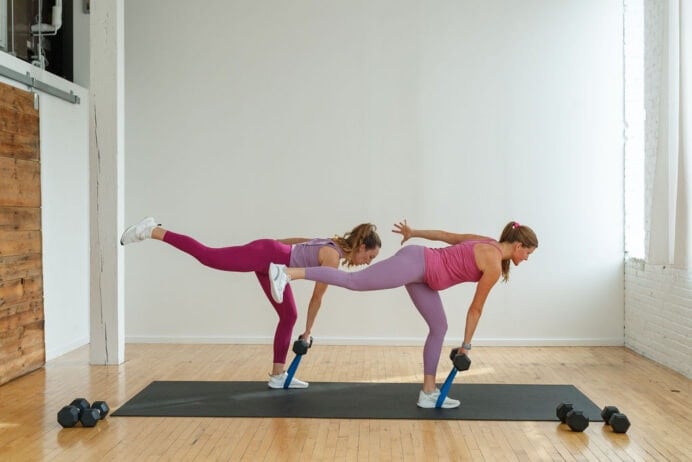
Wrist Pain Exercises: How to Avoid Wrist Pain Doing Planks and Push Ups
If you’re dealing with wrist pain, you don’t have to give up on upper body strength training. As a personal trainer and group fitness instructor, wrist pain from exercise is one of the most common complaints I hear from women. These five wrist pain exercises and modifications decrease stress on your wrist joints, allowing you to exercise pain-free.
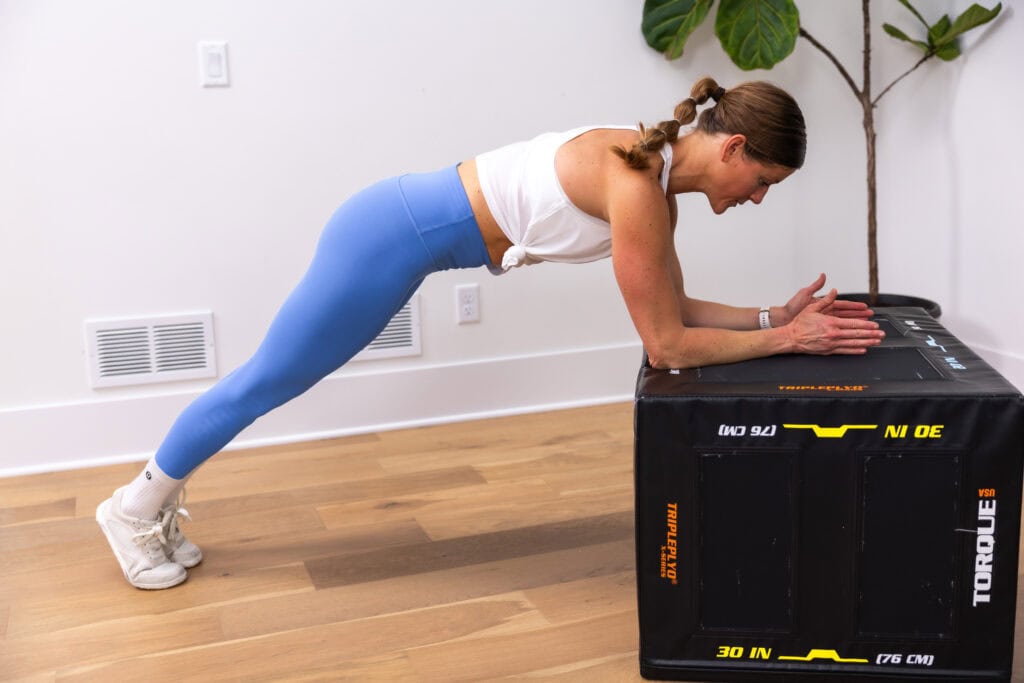
I receive messages daily from people dealing with wrist pain. Issues like poor form, muscle imbalances, and limited mobility in the shoulders or forearms can contribute to discomfort around the wrist joint during exercises like push ups and planks.
Whether you’re recovering from an injury or generally experience wrist pain, these five exercise alternatives will strengthen your upper body with minimal stress on the wrist joint.
Wrist pain can be more common during pregnancy and postpartum, often due to hormonal changes that cause fluid retention. You may also notice wrist pain from repetitive motions, like holding and lifting a baby.
If you experience severe pain, you may need to practice wrist flexion or let your wrists heal. Try extended periods of rest, icing the area daily, gently massaging the muscles in your forearms, and wearing wrist splints or using kinesiology tape for wrist support.
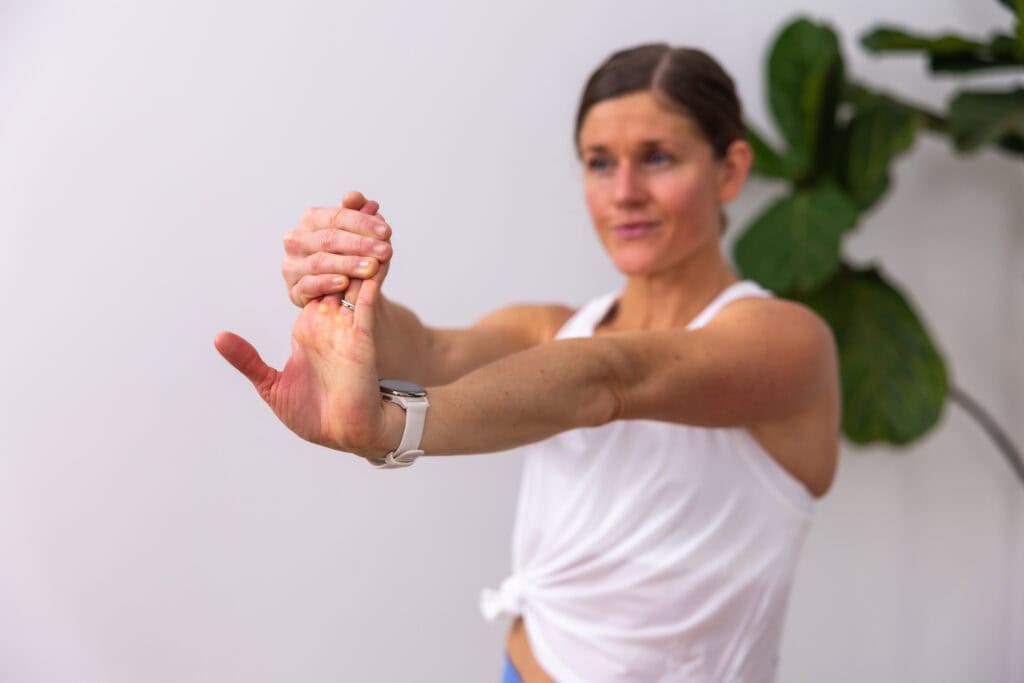
5 Exercise Modifications for Wrist Pain
1. If High Planks Hurt Your Wrists, Do Forearm Planks
Targets: Transverse abdominals, upper abs, lower abs and shoulders.
How The Forearm Plank Protects Your Wrist Joints: Forearm planks alleviate pressure on the wrists by keeping them in a neutral position, and transferring the weight bearing load to the forearms.
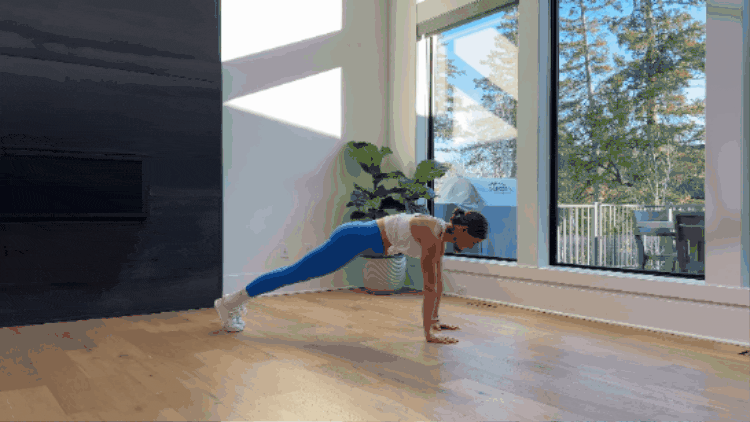

How To Do A Forearm Plank
- Start in a table top position with shoulders stacked over wrists (soft bend in the elbows) and hips over knees. Drop down to your forearms, shoulders stacked over elbows and hands in front of you.
- Then step both feet back and extend legs long, balancing on your toes. Pull up on your kneecaps and push back on your heels to keep your core engaged. Body forms a straight line from your head through your heels.
- Hold this position, maintaining a straight line with your body, gaze slightly in front of you.
Common Plank Mistakes:
- Allowing your shoulders to move behind the wrists in high plank.
- Sinking your hips or arching your back shifts pressure unevenly on your wrist joint.
2. If Push Ups Hurt Your Wrists, Do Push Ups On Yoga Blocks
Targets: Chest, shoulders, triceps, back, abs and core muscles.
How Adding Blocks Protects Your Wrist Joints: Push ups on yoga blocks, dumbbells, or parallel push-up bars will keep the wrist in a neutral position, reducing extension and minimizing strain. If this is still too painful, you can always sub a dumbbell chest press for push ups.
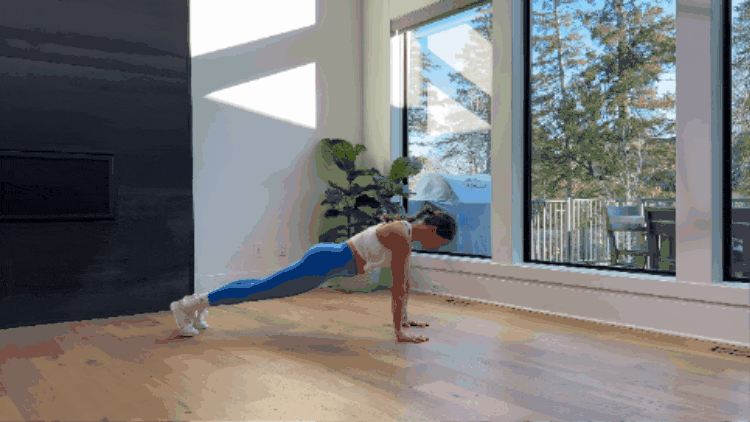
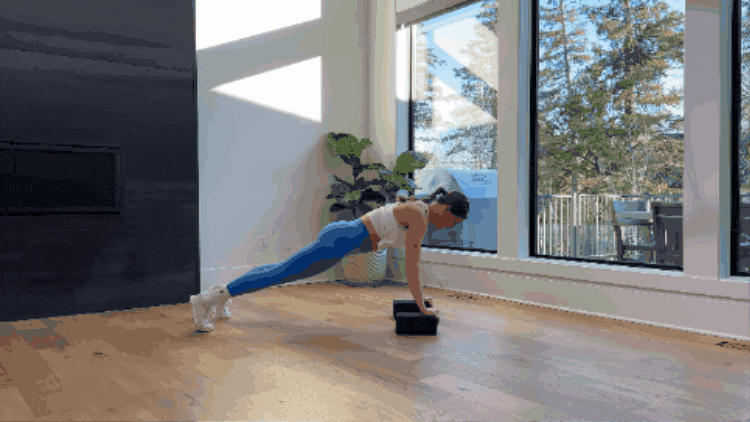
How To Do Push Ups On Yoga Blocks
- Start in a standard high plank position with your palms on yoga blocks, shoulder-width distance apart, and shoulders stacked over your wrists. Pull your kneecaps up towards your belly, feet hip-width apart.
- Hold this plank position, maintaining a straight line with your body, gaze slightly in front of you.
- Slowly lower your chest down towards the ground as your elbows fall back towards your hips (not out to the sides, keep elbows tight to the body).
- Once at the bottom of your push up, exhale as you push back up into high plank position (top of your push up position).
Common Push Up Mistakes:
- Flared elbows put additional stress on the wrists and shoulders. Keep elbows close to the body.
- Dropping your hips or failing to engage your core shifts excessive pressure onto the wrists.
3. If Plank and Row Hurts Your Wrists, Do An Incline Plank and Single Arm Back Row
Targets: Latissimus dorsi (or lats), upper back, chest, shoulders, arms and core.
How An Incline Plank and Row Protects Your Wrist Joints: Taking a back row to an incline plank position shifts the load from your wrists to your forearms and shoulders. Using an elevated surface, such as a box or sturdy table, reduces wrist extension and distributes pressure more evenly across your joints.
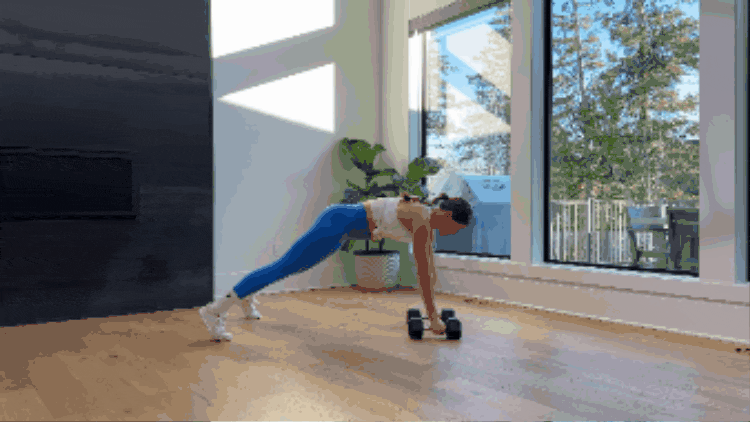
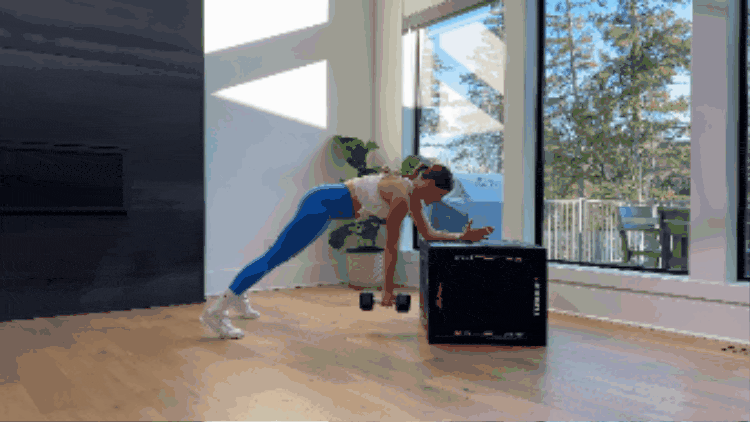
How To Do An Incline Plank Row
- Start in front of a bench, box or couch. Place one dumbbell on the ground below your right arm. Brace your left forearm horizontally on the bench, shoulder stacked over your elbow. Then step both feet back, finding an elevated high plank position.
- Gripping the dumbbell in your right hand, pull your right elbow to your right hip (performing a renegade row, or plank back row).
- Slowly and with control, extend your arm, lowering your dumbbell towards the ground and returning to the starting position.
Common Plank and Row or Renegade Row Mistakes:
- Over-twisting the torso shifts pressure unevenly.
- Gripping the dumbbells too tightly can lead to strain on your wrists.
4. If Cat Cow Hurts Your Wrists, Perform Table Top Exercises On Your Fists
Targets: Spine and low back.
How Making A Fist Protects Your Wrist Joints: By forming a fist with your knuckles pressing into the ground, your hands are elevated, reducing the direct pressure on your wrists.
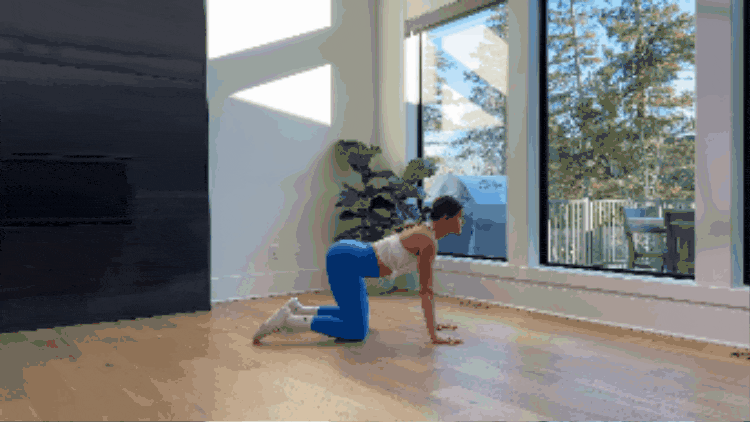
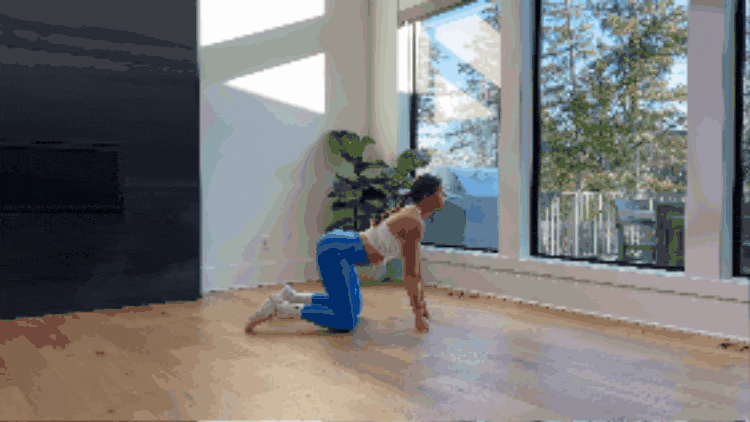
How To Do A Cat Cow On Your Fists
- Start in a table top position (quadruped) on all fours and form your hands into a fist position (knuckles facing the ground). Shoulders are stacked over wrists and hips are stacked over knees.
- Find a neutral spine — think of the spine as a straight line connecting the shoulders to the hips. Keep the neck long by looking down and out.
- As you inhale, find an arch pose by curling your toes under and tilting your pelvis back so that your tailbone sticks up. Drop the belly down as you draw your navel in.
- Take your gaze gently up toward the ceiling. This is cow pose.
- On your exhale, round out for cat pose. Release the tops of your feet to the floor and tuck your tailbone.
- Draw your navel toward your spine and drop your head, gazing toward your navel.
Common Table Top Mistakes:
- Bearing too much weight in the hands instead of evenly distributing it to the knees and core.
- Hyperextending the wrists by splaying fingers wide and pressing unevenly into the mat.
5. If Burpees Hurt Your Wrists, Do A Dumbbell Burpee
Targets: Total body — legs, hip flexors, calves, arms, shoulders, back, abs and core.
How Dumbbell Burpees Protect Your Wrist Joints: Using dumbbells will keep the wrists neutral in the push up position, reducing the impact and strain on your wrists.
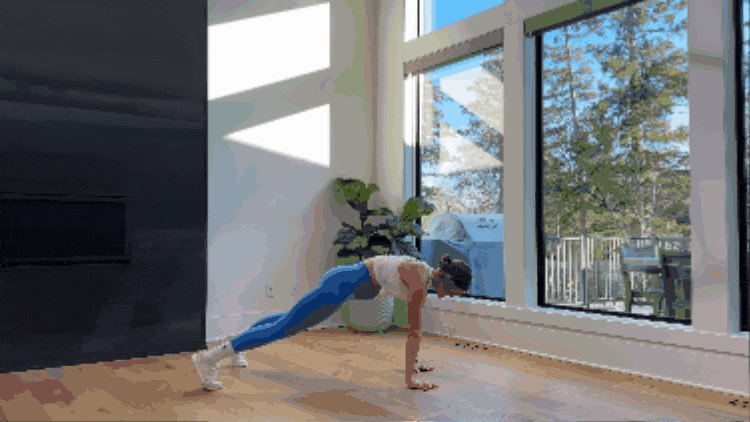
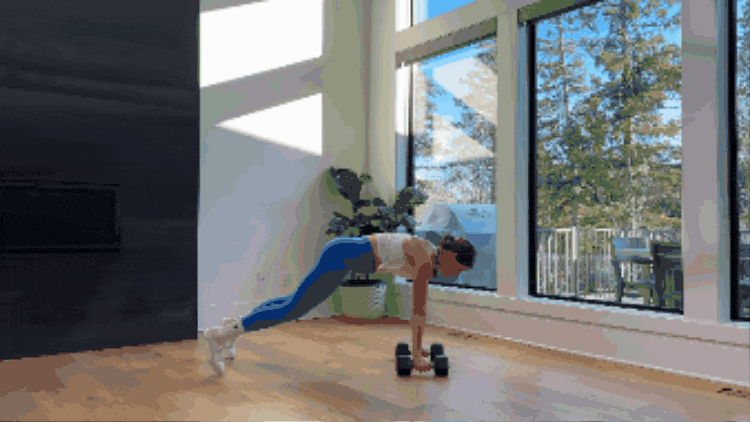
How To Do A Dumbbell Burpee
- Stand with feet hip-distance apart, or a little wider. Hold two dumbbells in front of you, at your hips.
- Engage your core and lower your hips down to the bottom of a squat as you place the dumbbells on the ground between your feet.
- Step or jump both feet back to a high plank position. Make a straight line with your body from head to feet.
- Pause for a moment, then in one explosive movement, jump both feet forward and land just outside your hands or dumbbells.
- You should land in a deep squat from which you explosively stand up, pulling the dumbbells up.
Common Burpee Mistakes:
- Slamming hands into the ground when transitioning to the plank.
- Misalignment in the push up phase can overload the wrists.
FAQs
To modify workouts for wrist pain, focus on exercises that minimize pressure on the wrists, such as forearm planks, deadlifts, rows, and overhead presses. These alternatives help build strength while reducing wrist strain. Exercises like forearm planks shift weight off the hands and wrists, and movements that keep the wrists in a neutral position, like rows and overhead presses, are gentler on the joints.
Wrist pain during push ups and plank holds is often caused by excessive wrist extension, which places strain on the joints and tendons. Poor form, such as misaligned hands or uneven weight distribution can also contribute to discomfort by increasing pressure on the wrists.
Misalignments in hand and wrist bones and ligaments can cause ulnar impact syndrome or tendonitis (tendon inflammation).
Wrist pain can result from repetitive strain, overuse, or poor joint alignment during activities, leading to inflammation or stress on tendons and ligaments. Underlying conditions such as arthritis, carpal tunnel syndrome, or past injuries can also contribute to discomfort in the wrist.
More Workouts
Arm WorkoutsPin this: 5 Wrist Pain Exercises
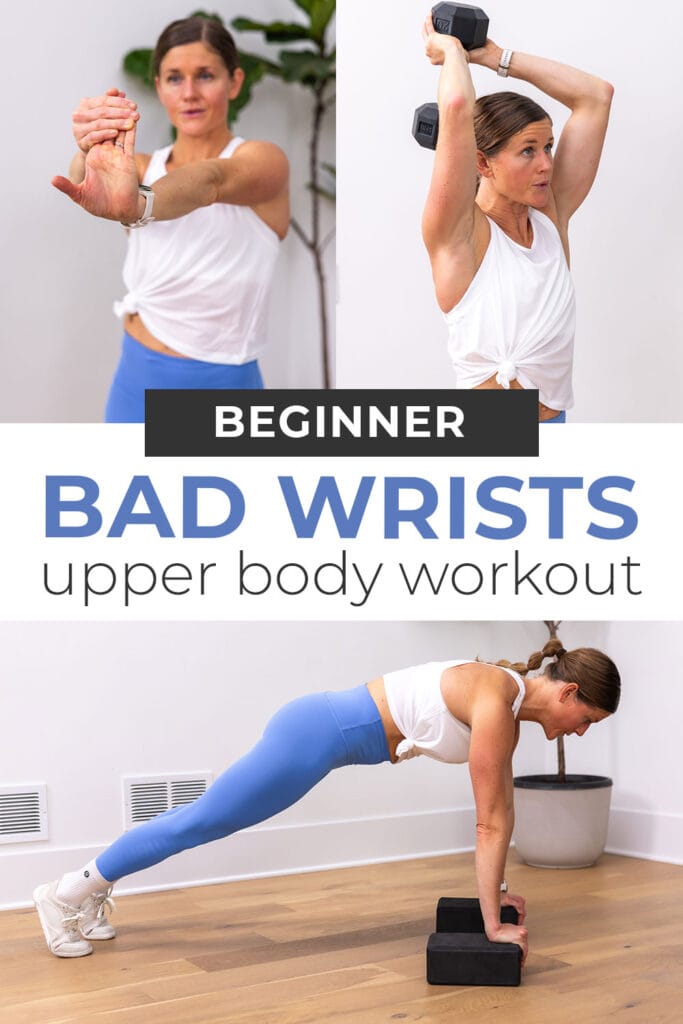
This post includes affiliate links. I do make a small commission for products purchased using these links (at no additional cost to you). Thank you for supporting Nourish Move Love, making the content you see on this blog possible.










